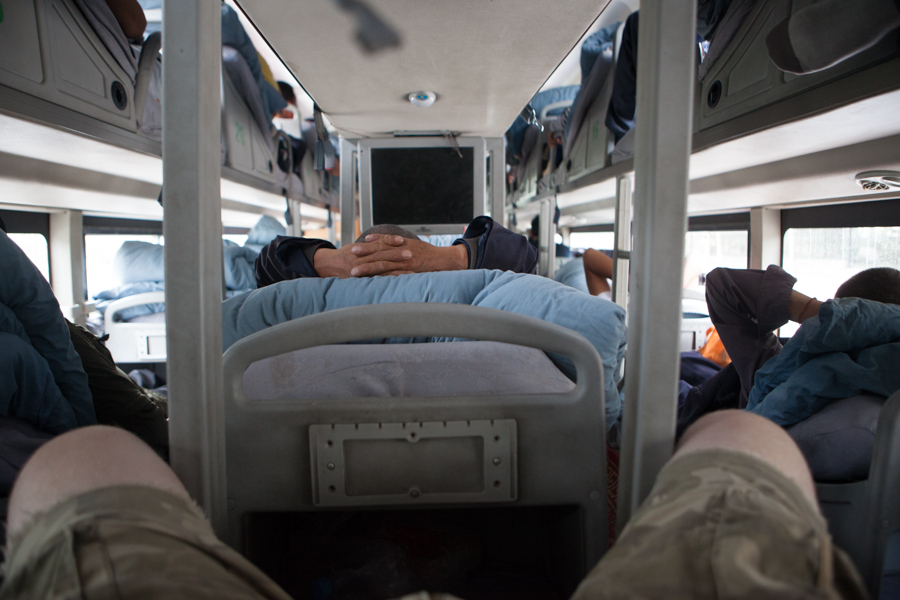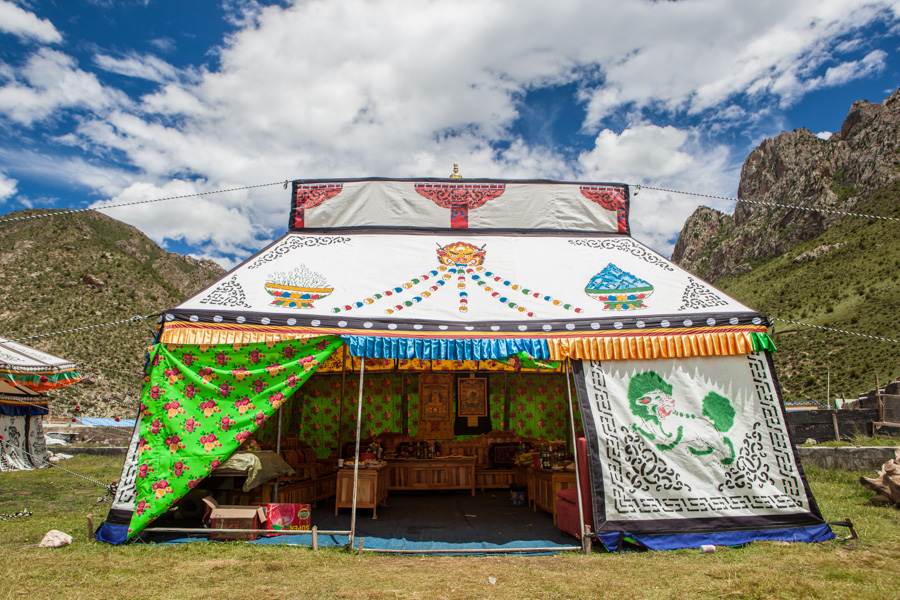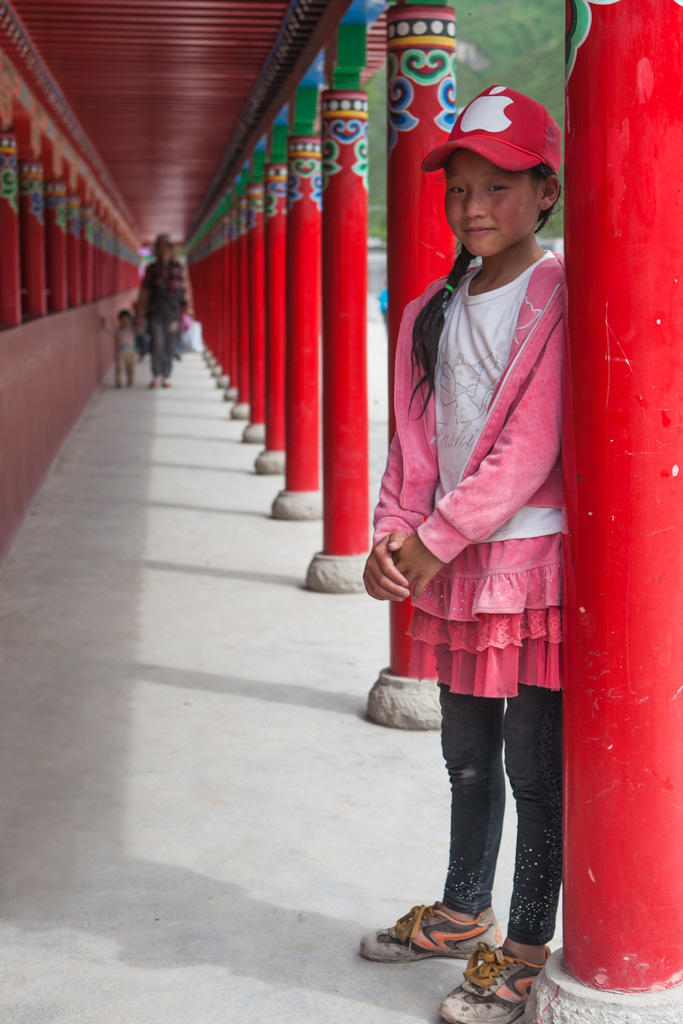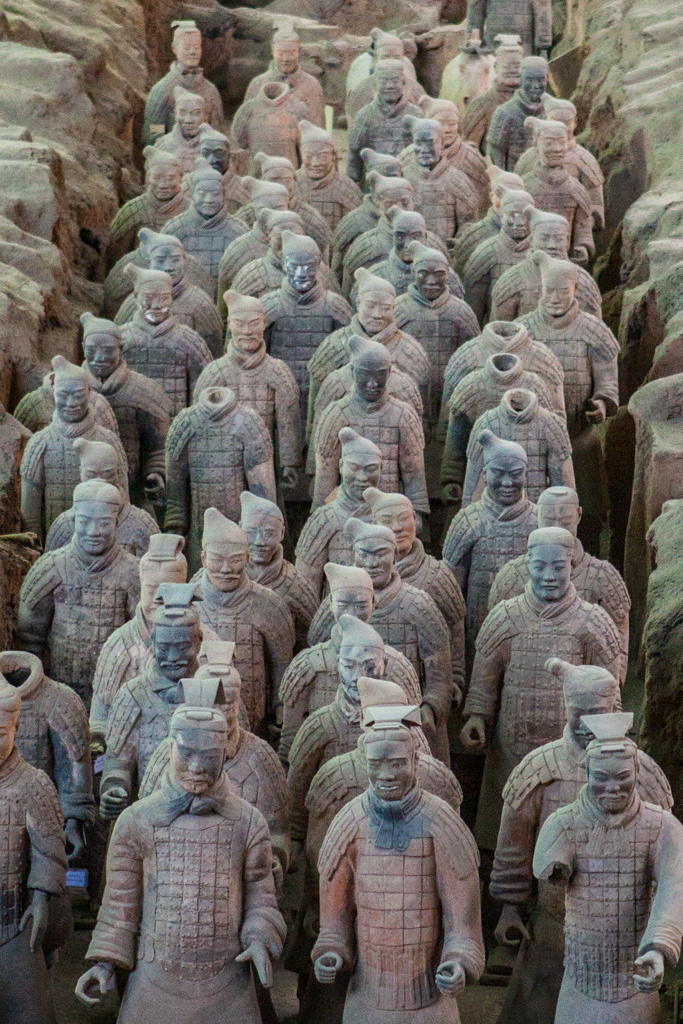To Kham and Back – Summer ’13 Western China Photojourney
This summer I traveled solo through through three western Chinese Provinces; Gansu, Qinghai and Sichuan. I chose remote places away from hoards of tourists, where blue sky is plentiful and pollution a myth from the east. Most of where I traveled is a predominantly Tibetan region, formerly known as the Kham region of Tibet, which now is in southern Qinghai and northwestern Sichuan Provences. Many of these places seemed almost untouched, though I did see many monks with iPhone’s and wads of cash, despite their mud, dirt and stone houses. Everyone was friendly, despite some words of caution from some of the Han ethnic (majority) group that the Tibetan (藏族 – zang zu) people of this region were ‘wild’ and theft was a higher possibility. I found no evidence of this, and had a very pleasant experience.
Total distance traveled: 6,282 km / 3,903 mi, round trip. Total train distance: 3,855 km / 2,395 mi. (72~ total hours, hard seat.) Total bus, van, car distance: 2,427 km / 1,508 mi. (60~ total hours.)
First, I boarded a train from Weifang, where I live and work, to Lanzhou, waited a few hours, watched the sun set much later in the day than normal due do my location being much farther west than it normally is. Hopped on a train to Zhangye, in Gansu Provence, so I could see the Zhange Danxia Landform, these crazy looking rainbow mountains.
 Before I went to the landform, I walked around Zhangye a bit. I noticed this boy staring into this machine, and wondered what he was doing. Turns out it is some kind of therapeutic (they believe) machine, which emits some red, blue and green LED lights in alternating patterns. Definitely seemed strange to me.
Before I went to the landform, I walked around Zhangye a bit. I noticed this boy staring into this machine, and wondered what he was doing. Turns out it is some kind of therapeutic (they believe) machine, which emits some red, blue and green LED lights in alternating patterns. Definitely seemed strange to me.



Funny translations are a part of daily life, but this one seemed special.
 After Zhangye, I took a bus to Xining, Qinghai Provence. Lots of Muslim Chinese. Best thing about this town was; no pork! I’m quite sick of eating it, it’s very common where I live. So, beef baozi everywhere was a treat. I didn’t stay here long, I wasn’t quite sure when the horse festival started so I wanted to be early (and good thing I was…)
After Zhangye, I took a bus to Xining, Qinghai Provence. Lots of Muslim Chinese. Best thing about this town was; no pork! I’m quite sick of eating it, it’s very common where I live. So, beef baozi everywhere was a treat. I didn’t stay here long, I wasn’t quite sure when the horse festival started so I wanted to be early (and good thing I was…)
 Then the 20 hour bus ride from Xining to Yushu, Qinghai. These beds were made for tiny people. My legs couldn’t fully extend if I put them in the leg-hole, so I slept mostly like this, and various different angles. Luckily the cool temperatures made me more comfortable than I would have otherwise been.
Then the 20 hour bus ride from Xining to Yushu, Qinghai. These beds were made for tiny people. My legs couldn’t fully extend if I put them in the leg-hole, so I slept mostly like this, and various different angles. Luckily the cool temperatures made me more comfortable than I would have otherwise been.
 This drive was all uphill, the Tibetan plateau was before us.
This drive was all uphill, the Tibetan plateau was before us.
 Upon arriving in Yushu, a town which was devastated in 2010 by a 6.9 magnitude earthquake, I found the hostel information I had looked up online was no good. Luckily Nicole did some searching and found me this lovely place, which is a hotel / etc but it wasn’t yet open, but the owner let me stay there for free, for three days. Also they fed me a meal or two, and drove me to some places. Very nice family!
Upon arriving in Yushu, a town which was devastated in 2010 by a 6.9 magnitude earthquake, I found the hostel information I had looked up online was no good. Luckily Nicole did some searching and found me this lovely place, which is a hotel / etc but it wasn’t yet open, but the owner let me stay there for free, for three days. Also they fed me a meal or two, and drove me to some places. Very nice family!
 Some Tibetan language carved on a stone. This was the first one I saw, and it got more frequent from there.
Some Tibetan language carved on a stone. This was the first one I saw, and it got more frequent from there.


There was this broken earthen house on the hill across the river behind the place I was staying. I climbed the hill to have a closer look, turns out it was still inhabited.

 A crumbling building in Yushu from the 6.9 magnitude earthquake here in 2010. Looks like they’re trying to preserve it as-is.
A crumbling building in Yushu from the 6.9 magnitude earthquake here in 2010. Looks like they’re trying to preserve it as-is.

 Prayer flags from peak to peak at the entrance to the Temple of Princes Wencheng.
Prayer flags from peak to peak at the entrance to the Temple of Princes Wencheng.
 The Temple of Princess Wencheng.
The Temple of Princess Wencheng.


The nice people who let me stay at their unfinished hotel took me to this event out of town with singing and dancing. I think a wedding might have been happening? I regret not staying longer, but I was on “their time” so I didn’t want to inconvenience them.
 A girl serving watermelon. A girl serving watermelon.
A girl serving watermelon. A girl serving watermelon.
 A sign thanking the government for providing assistance after the terrible 2010 earthquake in this city, Yushu, Qinghai, China.
A sign thanking the government for providing assistance after the terrible 2010 earthquake in this city, Yushu, Qinghai, China.
 Torrential rain for a few moments, I sought shelter and managed to snap this sloppy photo of some lightning.
Torrential rain for a few moments, I sought shelter and managed to snap this sloppy photo of some lightning.
 School girls on their lunch break. I asked them where to eat.
School girls on their lunch break. I asked them where to eat.
 Yushu is, I’m told, the Guinness World Record holder for the amount of inscribed, stacked Tibetan prayer stones, or whatever. There were a lot of them!
Yushu is, I’m told, the Guinness World Record holder for the amount of inscribed, stacked Tibetan prayer stones, or whatever. There were a lot of them!

 Old men spinning prayer wheels outside the monastery in Yushu, Qinghai Provence.
Old men spinning prayer wheels outside the monastery in Yushu, Qinghai Provence.
 Detail of one of the monastery’s doors.
Detail of one of the monastery’s doors.
 Girl sitting in front of this door.
Girl sitting in front of this door.
 Spinning huge prayer wheels near the entrance.
Spinning huge prayer wheels near the entrance.


From Yushu I went to Ganzi, a Tibetan town in the mountains of northwestern Sichuan Provence. Multiple mountain passes over 5,000 meters / 16,400 feet.
 Highway S217 slices into endless grassy hills on this route.
Highway S217 slices into endless grassy hills on this route.
 Morning mist in the mountains.
Morning mist in the mountains.

 Everything’s instantly spicier! Yup, it’s Sichuan Provence. This dish is yak meat noodles.
Everything’s instantly spicier! Yup, it’s Sichuan Provence. This dish is yak meat noodles.
 Here’s what we had to deal with on these roads. Waiting for huge trucks to go by, with inches of leeway.
Here’s what we had to deal with on these roads. Waiting for huge trucks to go by, with inches of leeway.
 Thought it was cool how you can see the grass-line end.
Thought it was cool how you can see the grass-line end.

 Prayer flags at a mountain pass. These were on every peak, regardless of how steep. I’m sure there’s so many more I couldn’t even see.
Prayer flags at a mountain pass. These were on every peak, regardless of how steep. I’m sure there’s so many more I couldn’t even see.

 Sunrise in Ganzi, Sichuan Provence.
Sunrise in Ganzi, Sichuan Provence.
 This hostel was a family live-in one, and they also made me lunch. Quite delicious! Their 3-year-old grandson looking at me as I photograph our feast.
This hostel was a family live-in one, and they also made me lunch. Quite delicious! Their 3-year-old grandson looking at me as I photograph our feast.
 Their architecture definitely looked starkly different from the rest of Han China.
Their architecture definitely looked starkly different from the rest of Han China.


 Turning prayer wheels outside the monastery in Ganzi, Sichuan.
Turning prayer wheels outside the monastery in Ganzi, Sichuan.
 A shrine inside the monastery.
A shrine inside the monastery.
 I just had to take this guy’s photo. He said no initially but I asked again being friendly and humble, so he agreed. Totally legit.
I just had to take this guy’s photo. He said no initially but I asked again being friendly and humble, so he agreed. Totally legit.
 Monks circle clockwise around the big stupa outside of town.
Monks circle clockwise around the big stupa outside of town.


 Check out this woman’s hair. Very interesting.
Check out this woman’s hair. Very interesting.
 Pretty big Tibetan monk dude.
Pretty big Tibetan monk dude.



 I like her traditional looking clothes with the modern Apple logo pattern.
I like her traditional looking clothes with the modern Apple logo pattern.

After a few days in Ganzi, I decided it was time to head to my main destination: Litang, for the annual horse festival. I arrange a ride with a “bread car” (van) but split the price with other people, so you must wait for it to be full before departing, sometimes that means waiting another day. I finally negotiated a good price and was ready, but as it turns out, the guy actually had been planning to drive me halfway to some tiny village, transfer me to one of his friends who was heading south the same direction. Well his friend had already left before we arrived, so I was forced to stay the night in that town. I demanded they find me a place to stay, at least. Everything went fine, and I was definitely the only foreigner in this village. It was really quite tucked up against the mountains.



The journey was equally as bumpy, but beautiful.
 Xinlong, a village between Ganzi and Litang in northwestern Sichuan Provence.
Xinlong, a village between Ganzi and Litang in northwestern Sichuan Provence.

 Dusk view of Xinlong from the monastery on the hill.
Dusk view of Xinlong from the monastery on the hill.




Unique faces in a unique place.
Made it to Litang the next day after another grueling 8+ hour drive through beautiful but insane mountain terrain.
 Washing vegetables.
Washing vegetables.
 They used compact soil with from the hills to build walls and parts of their houses.
They used compact soil with from the hills to build walls and parts of their houses.
 Not sure what was going on here, but they seemed to be listening to him.
Not sure what was going on here, but they seemed to be listening to him.
 Finally got to the horse festival, this guy got loose and here they have roped him again.
Finally got to the horse festival, this guy got loose and here they have roped him again.

I liked this kid’s hat.
 A real ponytail braid!
A real ponytail braid!

 A girl sits on her father’s horse before the start of the horse festival.
A girl sits on her father’s horse before the start of the horse festival.

 Throwing small colored pieces of paper with, presumably, some prayers written in Tibetan script, at the start of the Litang Horse Festival.
Throwing small colored pieces of paper with, presumably, some prayers written in Tibetan script, at the start of the Litang Horse Festival.

 A girl tries to avoid stepping on the colored papers.
A girl tries to avoid stepping on the colored papers.
 Some of the crowd.
Some of the crowd.
 Hilarious out-take I had to share. Check out both rider and horses’ mouths.
Hilarious out-take I had to share. Check out both rider and horses’ mouths.



 And we’re off! Riders & their horses, in no real order or unison, begin racing down the path between crowds on both sides. Later on, they started doing tricks.
And we’re off! Riders & their horses, in no real order or unison, begin racing down the path between crowds on both sides. Later on, they started doing tricks.
 Several monks gawk at the size of my shoes.
Several monks gawk at the size of my shoes.
 The front of the monastery, from the bottom.
The front of the monastery, from the bottom.
 The back of the monastery, from the top of the hill, overlooking Litang down below at 4,000 meters / 13,100 feet.
The back of the monastery, from the top of the hill, overlooking Litang down below at 4,000 meters / 13,100 feet.

Panorama from a yak’s perspective.


Prayer flags at the sky burial site.

Knives, remnants from previous sky burials, littered this hill.

Inscribed stones at the top of the sky burial hill.

Human bone fragments were also prevalent.



A family hanging prayer flags. After this shot they asked me to help them put it higher where they couldn’t reach, and I gladly helped.

I later learned that the Medok, the owner of Potala Inn and the most helpful person during my stay in Litang, was related to the deceased man. So, we had permission, but besides that, everyone’s attitude about it made it seem like an everyday thing. Tibetans believe that after death, the soul leaves and the body is an empty vessel. The ground is very hard year-round, if not perma-frost, as it sits 4,000 meters / 13,000 feet on the Tibetan Plateau. Trees for wood for cremation are also scarce for the same reason. Sky burials, where a large predatory bird, usually a vulture, will eat the flesh of the recently deceased relative, consuming the entire body, bones and all, and flying up into the heavens.

This was my initial vantage point, but one of the family members beckoned to us to come closer, so I did.

Moving a large stone slab which will be used later to smash the bones into fragments.

The “body breaker” begins his job of making incisions into the flesh, making cubes so the sky burial might happen a bit faster.
| GRAPHIC IMAGE: NSFW & NSFL - the body breaker moves away and the vultures begin their task | SelectShow |
|---|---|



| GRAPHIC IMAGE: NSFW & NSFL - the body breaker & another man begin scaring away the birds since they've finished most of the flesh, he picks up the skeleton and brings it to the big stone slab | SelectShow |
|---|---|
| GRAPHIC IMAGE: NSFW & NSFL - the body breaker carries the skeletal remains to the stone slab so he can begin breaking them into smaller pieces, so they too can be consumed by the vultures. | SelectShow |
|---|---|
| GRAPHIC IMAGE: NSFW & NSFL - he mixes some grains with the mashed bones, mixes it together, making it more enticing for the vultures to eat | SelectShow |
|---|---|

He hands the family a piece of the skull wrapped in a paper towel. I could’t see which part.

The body breaker exits, as his work has finished. A man behind him on the hill has been praying and chanting out loud since before the sky burial started.


This boy wanted to touch my arm hair, as he hasn’t seen much of it, maybe even ever. Asian men don’t have much arm or leg hair. He also asked me for a cigarette, to which I then gave him as good a lecture in Mandarin as I could about how he’s too young to smoke and it’s unhealthy.

Back at the horse festival, Day 2.



Target trick shooting, pretty cool.



Also ribbon picking-up.






This guy had a real gun, I guess loaded with just black powder, scared the hell out of me, I was right near it, didn’t expect anything. People later told me they saw me jump, lol.

They had ribbons tied to soft drink mini-packs, pretty heavy actually, especially for that speed.




I like how you can see the dirt being kicked up from his hand running along the ground.

Funny but useful sleeves.

Dat sky.

Sunset over Litang.

Tried my hand at some astrophotography the night before departing Litang. Should have done much more of it, it came out pretty cool!

Ten minute exposure.
Left Litang for Kangding. Originally I was going to keep going south to Yunnan Provence, but the rainy weather was too heavy and I didn’t want to risk my photos suffering. So I headed home at this point, though through places I hadn’t been before that I could stop and see.

View from my hostel, near where I found some nice natural herbs growing nearby. What a vacation!

Checked out the pandas in Chengdu.


Also the Terra-Cotta Warriors of Xi’an.

From Xi’an, I came back to Weifang.
If you feel so moved, please comment, like, or share this post with others. I would very much appreciate it! I consider some of this to be among the best photos I’ve ever taken. Also, if by any chance you’d like to support my travels and equipment expenses, I’d love for you to have a print of mine in exchange for that! ^_^ Please visit my new SmugMug prints store right here: Charlie McRae Photography prints International Shipping! Also, shortly after this blog is posted, my website itself will get an update with new photos seen here, and some others.
Cheers!







Wow! Charlie, these photos and the stories behind them are truly some of the gnarliest. That Sky Burial was INTENSE.
Thank you for sharing a piece of you awesome story with us! Your art and life is an inspiration!!! Keep living, Buddy!
thank you so much, Chris!
Hey man, so many Awesome pics!!! Congrats on your superb journey and extraordinary work!
Thanks man!
It’s been so long since I saw so much space, your photos were the next best thing! Loved the riding shots Charlie, well done mate!
Thank you so much Alex!
fantastic !
Bravo.
Glad you enjoyed it!
Your website is amazing. Pictures are wonderful and I’m very humble to your work. Ask a lot of courage to go alone in this part of the world. Anyway, i’m a huge fan !
You’re too kind. Thank you, sir!
lovely trip in every sense et for me first — and striking — pictures of sky burial..!
How long before authorities forbid it, so that place can open to tourist hordes..?!
Hope it remains as vividly holesome as you found it
well done
Thanks. The government banned it for a while but began to allow it again in certain places. I have a feeling it will last for a while, that whole area seems almost untouched. Then again, I suppose Shanghai felt untouched 30 years ago… but that is a different story, truly.
This is the most amazing collection of photos I have ever seen.
Wow, thanks Paige! Flattering.
Hi Tom: Nice pictures. What camera are you using? What lens/lenses? Looks like a great trip.
Hi, my name is Charlie, but you can call me Tom. =P Thanks. I’m using a Canon 5D Mark II with a 24-70 f/2.8 L mostly. It was a blast!
Great blog, story, and photos Charlie however there’s one thing that confuses me.
A wikipedia page says that the Danxia Landforms are in Fujian province in SE China as opposed to NW China. That said, the Danxia (which means Red Dawn I believe) terrain looks very dry which would argue for NW and not SE China.
https://en.wikipedia.org/wiki/Danxia_landform
there are different types of Danxia landforms – thanks for your comment!
– thanks for your comment!
Thank you Charlie.I landed in Lhasa in October 1987 ,the day the police station burned.We were able to see a Lhasa which had already been much *ucked by the chinese but which is now totally gone.I love the Tibetan people,and they have given much to me.We were able to hitch-hike around centralTibet for 3 months. You have given me some ideas for one more trip,but I probably cant stomach to the chinese takeover ,much worse than any sky burial.
Interesting! Tell me more! Do you have photos?